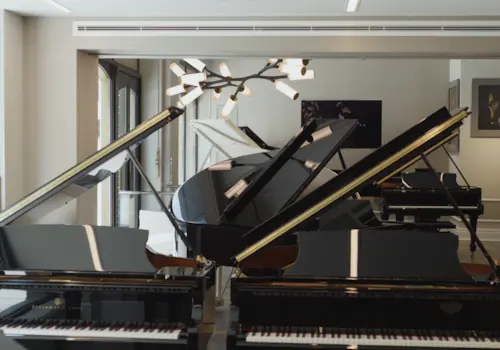16 May 2025
|
If you’ve ever sat at the piano, frustrated by slow progress, you’re not alone. Many pianists - beginners and professional players alike - struggle with how to make their practice sessions truly effective. This is where the 80/20 rule might come in handy. Let’s explore what this rule is, how it applies to piano playing, and how it can help you with your progress.
What is the 80/20 Rule?
The 80/20 rule, also known as the Pareto Principle, is the idea that 80% of results come from just 20% of efforts. Initially coined by Italian economist Vilfredo Pareto, this principle has been widely applied to business, productivity, and even personal growth. It’s a guiding rule that helps us focus on the small, impactful actions that yield the most significant results.
In piano practice, this ratio might even shift to 90/10, meaning 90% of your improvement will often come from dedicating your time to just 10% of the piece you’re working on. This may seem counterintuitive, but it’s a game-changer once you understand how to apply it.
Why focused practice is more effective
When learning a new piece, it can be tempting to repeatedly play through the parts you already know well. After all, they sound great, they feel good, and they boost your confidence. However, spending too much time on these areas doesn’t actually move the needle in your overall performance.
The truth is, most pieces of music have sections that are inherently more challenging - perhaps a tricky scale run, complex arpeggios, or dynamic shifts that require finesse. These sections are where the 80/20 rule (or 90/10 rule) comes into play. By focusing 80-90% of your practice time on these small, challenging parts, you’ll make the most progress in the shortest amount of time.
Find out how to practise the piano the right way.
How to apply the 80/20 rule
1. Identify the sections that you struggle with the most.
Start by analysing your piece. Pinpoint the measures or phrases that require extra attention. These could be:
- Fast or intricate passages
- Awkward fingerings
- Jumps or leaps across the keyboard
- Tricky rhythms
- Dynamic contrasts or expressive elements
2. Break it down
Once you’ve identified the difficult areas, isolate them. Work on one section at a time, even if it’s as small as two measures. Avoid the temptation to play the entire piece repeatedly; instead, zero in on where your effort is most needed.
3. Slow down to speed up
Practise these sections slowly and deliberately. Focus on accuracy, articulation, and dynamics. Gradually increase the tempo as you build confidence and muscle memory.
At certain points it may feel counterintuitive to spend an hour on just a few measures, but this focused practice accelerates your overall learning. You’ll spend less time struggling with these sections later.
4. Integrate the sections
After mastering the challenging areas in isolation, integrate them back into the full piece. This will help you see how they fit within the overall structure and flow.
5. Track your progress
Keep a practice journal or log to track your improvement. Noticing progress, even in small increments, can be highly motivating.
You might be thinking “this sounds boring and frustrating”. If you find yourself getting bored doing the same sections over and over again, break up your practice sessions. Alternate between focused work on challenging areas and playing through easier sections for fun. This balance keeps your practice both productive and enjoyable.
The benefits of focused practice
1. Efficiency
By targeting specific problem areas, you make better use of your practice time. Instead of spending hours playing the same piece from start to finish, you’ll concentrate your energy where it’s most needed.
2. You’ll eventually master recurring themes
Many pieces of music repeat themes or motifs. By mastering one section, you’ll often find that similar sections become easier, saving you time in the long run.
3. Confidence under pressure
When preparing for a recital or exam, the most nerve-wracking moments are often the tricky passages. By dedicating time to these areas, you’ll feel more confident and secure in your performance.
4. Building strong foundations
Tackling difficult sections head-on builds discipline, patience, and resilience. These qualities are essential for any pianist looking to improve.
Using the 80/20 rule in everyday life
The Pareto Principle isn’t just for piano - it’s a powerful tool for optimising all aspects of your life:
- Work: Focus on tasks that deliver the highest value.
- Health: Prioritise habits with the greatest impact, like regular exercise and quality sleep.
- Personal growth: Spend your time on activities that align with your goals.
The 80/20 rule offers a clear path to more effective and rewarding piano practice. By focusing on the small sections that need the most work, you’ll see a massive improvement not just in individual pieces, but in your overall skill as a pianist.
So, the next time you sit down at the piano, remember: it’s not about how much time you spend practicing; it’s about where you direct your energy. Give it a go and let us know how you get on!
Join Pianist Prime to learn more about how you can become a better pianist. Immerse yourself in a treasure trove of scores, expert insights, in-depth tutorials and captivating stories from pianists past and present...







